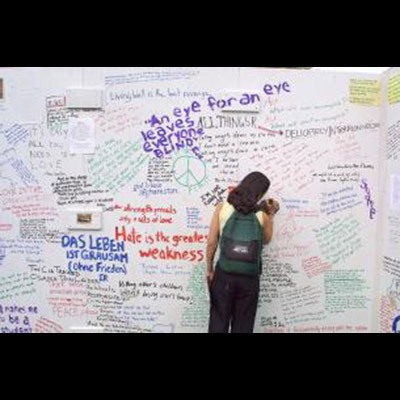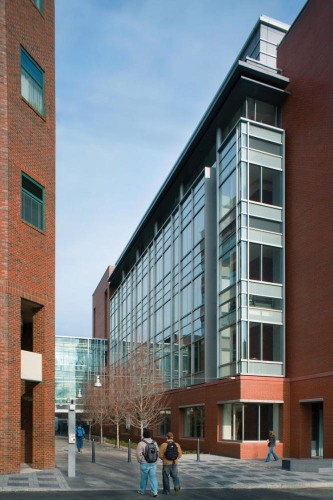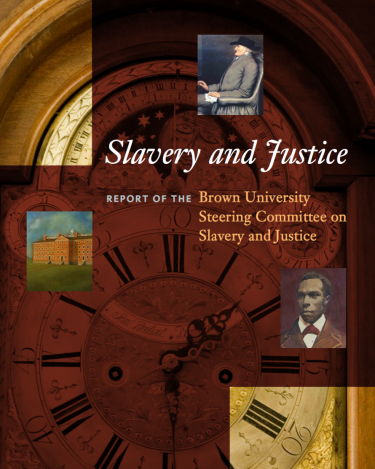This timeline chronicles more than 250 years of Brown University’s history.
These are key milestones from the 2000s.
This timeline chronicles more than 250 years of Brown University’s history.
These are key milestones from the 2000s.
While E. Gordon Gee was not the first president to resign from Brown, his decision to leave after only two years and to assume the position of Chancellor of Vanderbilt University took the University by surprise. Before beginning the search for a permanent replacement, the Corporation made a widely supported choice of Sheila Blumstein, Professor of Cognitive, Linguistic & Psychological Sciences, to serve as interim president, the first woman to fill that role.
February 6, 2000

A native of Texas and a 1967 graduate of Dillard University in New Orleans, Simmons received her Ph.D. in Romance Languages and Literatures from Harvard University in 1973. Her appointment as the President of Brown made her the first African American president of an Ivy League institution. Prior to coming to Brown, she had been President of Smith College since 1995. During her tenure at Brown, Simmons created an ambitious set of initiatives - The Plan for Academic Enrichment - designed to expand and strengthen the faculty; increased financial support and resources for undergraduate, graduate and medical students; improved facilities; renewed a broad commitment to shared governance; and ensured that diversity informed every dimension of the University. These initiatives led to a major investment of new resources in Brown’s educational mission. In addition to numerous other awards, in 2011, Simmons received the Rosenberger Medal, which is the highest honor Brown faculty can bestow.
2001–2012
The first annual Pow Wow at Brown was organized with support from the Third World Center and the Center for the Study of Race and Ethnicity. The intertribal event attracted over 1,000 people in one afternoon. The following year, the Pow Wow would expand to a two-day event.
Spring 2001
In 2001, the Afro-American Studies Program was upgraded to department status and renamed the Department of Africana Studies. According to department chair Lewis Gordon, the name reflected “the current broad focus on the African diaspora, the history and culture of people of African descent in North America, the Caribbean, Africa, Latin America, Latin Africa, and the Francophone and Arabic world.” It was the first Africana Studies Department in the Ivy League.
July 1, 2001

Brown students publicly display their responses to the terrorist attacks of September 11, 2001.
September 2001
In an effort to integrate research and study of engineering and physical sciences with the life sciences and clinical practice, Brown founded the Center for Biomedical Engineering in 2002. Interdisciplinary research areas include neuroengineering, biosensors, mechanobiology, and regenerative medicine.
2002
In 2002, President Ruth Simmons launched an ambitious program of academic enrichment. Initiatives undertaken as a result of the Plan included: increasing the size of the faculty, providing resources to advance scholarship and teaching and investing in the campus infrastructure. In 2003, in line with one of the Plan’s major goals, the College established need-blind admission for undergraduates.
2002
In support of Brown’s long tradition of interdisciplinary studies, the Brown Humanities Center (later re-named the Cogut Center for the Humanities) opened in 2003 to support collaborative research among scholars in the humanities. Since 2008, the Center has been located in Pembroke Hall.
Fall 2003
In March 2004, a new resource center opened in Faunce House to allow students to explore issues related to sexuality and gender. Today, the LGBTQ Center, serving lesbian, gay, bisexual, transgender, queer and questioning students, staff, faculty, their family and friends and the campus community, is co-located with the Sarah Doyle Women’s Center and offers educational programming, training, support, and advocacy services to the entire Brown community.
March 2004

Coach Phil Estes and his players celebrate their title in 2005, hoisting the Ivy League Trophy after a clinching win over Columbia. Brown won its first title in 1976, and Estes’ teams have won three more since he became head coach in 1998.
2005
In 2006, the Brown Medical School instituted the two-year Doctoring Course. This required course exposes first- and second-year medical students to clinical settings early in their training. Closely guided and mentored by physicians in community settings, students gain early practical experience and learn the importance of viewing a patient as a person.
2006

The new life sciences building at Brown was the University’s largest construction project to date and named for one of its largest donors: The Sidney E. Frank Hall for Life Sciences. A member of the Class of 1942, Frank left after a year due to an inability to pay tuition. Later, the successful businessman made a series of donations to Brown, including $20 million for the new life sciences building in 2004. That was quickly followed by a gift of $100 million in support of undergraduate financial aid to allow more students to “find what I found…what a difference Brown can make in a young person’s life.”
October 6, 2006

In 2003, President Ruth Simmons appointed a committee, which included faculty, undergraduate and graduate students and administrators, to investigate the University’s historical relationship to slavery and the transatlantic slave trade. After devoting three years to the task, the committee issued a report detailing how some of Brown’s founders and benefactors participated in slavery and the transatlantic slave trade and the benefits the University derived from these activities. The report also recommended that Brown establish a Center of Slavery and Justice; create a slave trade memorial; support educational engagements with the local community; and “maintain high ethical standards in regard to investments and gifts.” On February 24, 2007, the Brown Corporation endorsed a set of initiatives proposed within the report.
October 2006
After years of being able to cross-register for individual classes, beginning with the 2008–2009 academic year, high school students were able to apply to a fully dual degree program from both Brown and the Rhode Island School of Design. According to President Simmons, the new program combined, “Brown’s strengths in science and engineering, humanities and arts, and social sciences with RISD’s renowned programs in art and design studies and the liberal arts…offering students an extraordinary opportunity to draw on the offerings of two outstanding institutions.” At the end of the five-year program, students are awarded both a Bachelor of Arts (A.B.) from Brown and a Bachelor of Fine Arts (B.F.A.) from RISD.
July 24, 2007
In 2009, Brown and long-time partner IBM opened a multimillion-dollar supercomputer at Brown’s Center for Computation and Visualization. The supercomputer could perform 14 trillion calculations per second, making it the most powerful computational system in Rhode Island. Faculty and student researchers would use the machine to tackle “grand challenges” in climate change, energy, education and health.
November 20, 2009